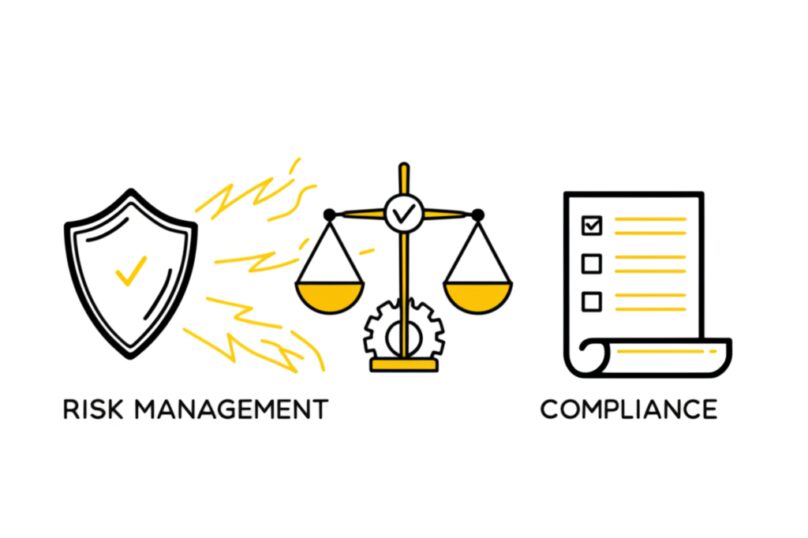Understanding Risk Management & Compliance

Hello Business Builders and Leaders!
In today’s fast-moving world, running a business is like navigating a busy road. There are many opportunities, but also some bumps and turns. Two very important things that help you stay safe and grow are Risk Management and Compliance. Even if you’re a small shop in Madurai or a big company in Chennai, understanding these ideas can save you a lot of trouble and help you shine brighter!
What is Risk Management?
Imagine you have a small idli shop in Coimbatore. Everyday, you need to make sure you have enough flour, good quality ingredients, and skilled cooks. What if the flour supplier suddenly stops delivery? Or what if a cook falls sick? These are “risks” – things that can go wrong and stop your business from running smoothly.
Risk Management is simply about:
- Finding Risks: Looking ahead to see what problems might come up.
- Understanding Risks: Knowing how big the problem could be.
- Fixing Risks: Making plans to avoid or reduce the problems.
Think about “Velu’s Electronics” in Tiruppur. Velu sells mobile phones. A risk could be phones getting damaged during transport. So, Velu ensures his delivery vans are properly padded and drivers are careful. This is simple risk management – reducing the chance of bad things happening.
What is Compliance?
Now, let’s talk about Compliance. This word means following the rules. Just like we follow traffic rules on the road, businesses must follow certain rules set by the government or other bodies.
For example, every business in Tamil Nadu needs to pay GST (Goods and Services Tax). This is a rule. If you don’t pay it on time or correctly, you might get a penalty or fine. Similarly, a restaurant needs to follow food safety rules to ensure customers don’t get sick.
Compliance is about:
- Knowing the Rules: Understanding what laws and regulations apply to your business.
- Following the Rules: Making sure your business activities stick to these rules.
Consider “Priya’s Organic Store” in Trichy. Priya sells organic vegetables and groceries. She must follow rules about where her products come from, how they are stored, and what labels they carry. By doing this, she stays compliant and builds trust with her customers.
How Do They Work Together?
Risk Management and Compliance are like two sides of the same coin. Many times, following the rules (compliance) helps you avoid risks. For instance, being compliant with fire safety rules (installing fire extinguishers, having clear exits) is also a way of managing the risk of a fire incident.
When you manage risks well, you often find yourself naturally complying with many rules. And when you comply with rules, you automatically reduce many risks to your business.
Simple Steps for Your Business in Tamil Nadu:
Here are some easy steps you can take:
- List Your Risks: Sit down and think: What could go wrong in my business?
- Money Risks: What if customers don’t pay on time?
- People Risks: What if key staff leave?
- Operation Risks: What if my machines break down?
- Reputation Risks: What if a customer has a very bad experience and shares it online?
- Know the Rules: Find out which government rules apply to your specific business.
- Is it GST?
- Are there specific licenses needed for your shop?
- Are there labor laws for your employees?
- Make Simple Plans: For each risk, think of a simple way to handle it. For each rule, think of a simple way to follow it.
- If customers don’t pay, have a clear follow-up plan.
- If a machine breaks, have a backup or a repair contact ready.
- Teach Your Team: Make sure everyone who works with you knows about these risks and rules. A well-informed team is a strong team.
- Review Regularly: Things change! So, check your risks and rules every few months to make sure your plans are still good.
Real-Life Example: “Aadi Textiles” in Erode
Let’s look at “Aadi Textiles,” a small textile manufacturing unit in Erode. They faced a big risk: the dyes they used were not always environmentally friendly, and new government rules were coming out about water pollution.
The Risk: If they continued using old dyes, they risked heavy fines, their factory being shut down, and losing customer trust because people care about the environment now.
The Compliance Step: We helped them find new, eco-friendly dyes available locally and set up a proper water treatment plant, even if it was a small one, to meet the new government standards. We also trained their staff on how to handle these new dyes safely.
The Result: Aadi Textiles not only avoided fines but also gained a reputation as an environmentally conscious business. Many new customers, especially younger buyers, started preferring their products. Their brand grew stronger because they managed the environmental risk by choosing to comply with upcoming regulations.
Why Does All This Matter?
By actively managing risks and staying compliant, you achieve many good things:
- Peace of Mind: You worry less about unexpected problems.
- Save Money: You avoid fines, penalties, and big losses.
- Build Trust: Customers, suppliers, and even banks trust you more.
- Grow Stronger: A stable business is a business that can grow and innovate.
- Good Reputation: Your brand becomes known for being responsible and reliable.
So, whether you’re a budding entrepreneur or a seasoned business owner in Tamil Nadu, remember that Risk Management and Compliance are your silent partners in success. They help you build a business that is not just profitable but also safe, strong, and respected for years to come. Start simple, take small steps, and watch your business thrive!
